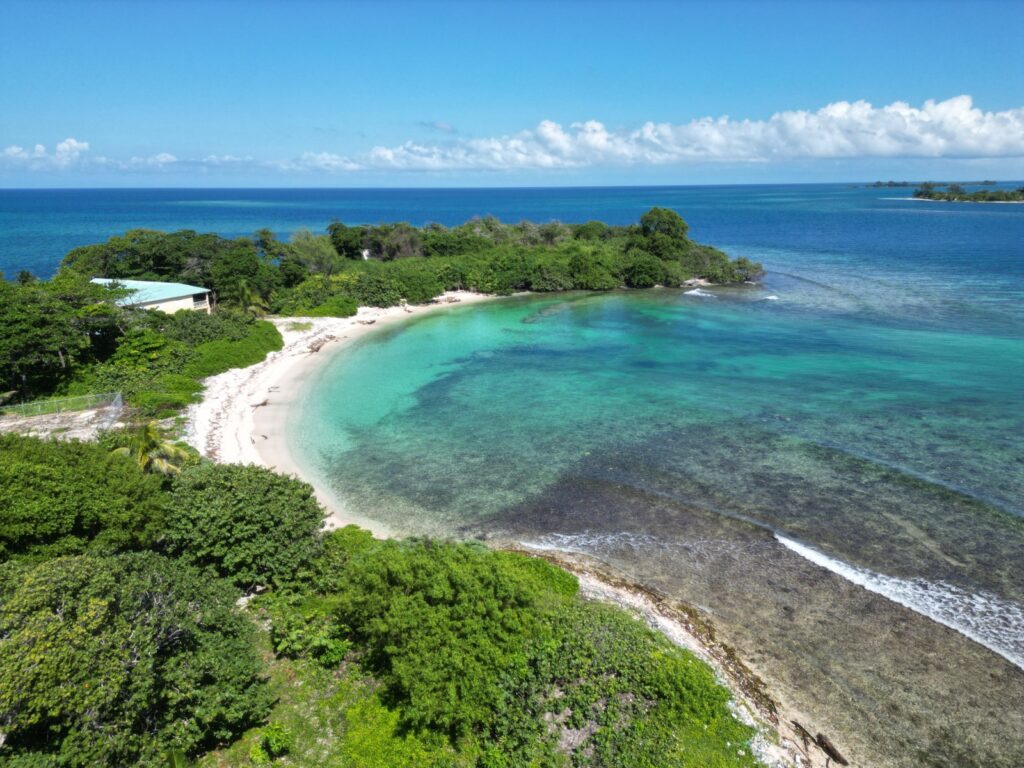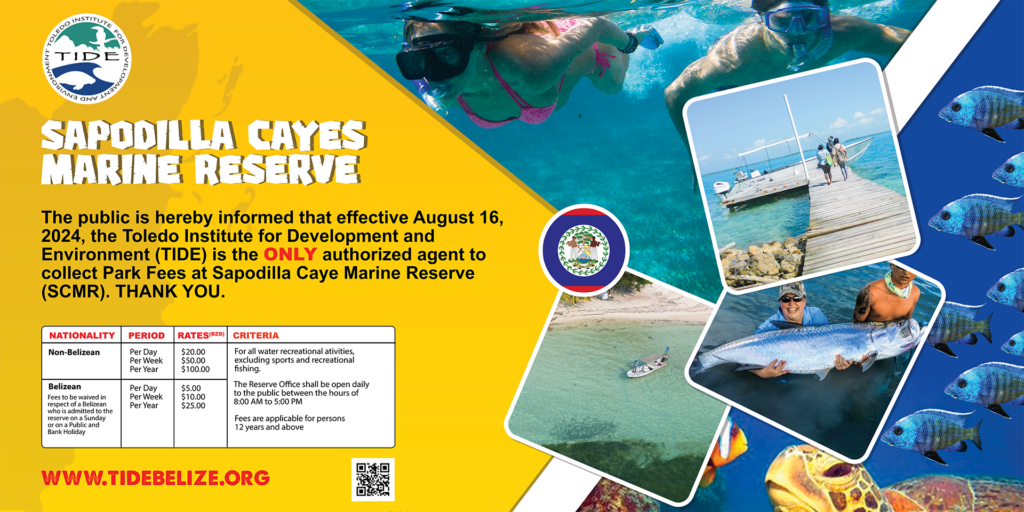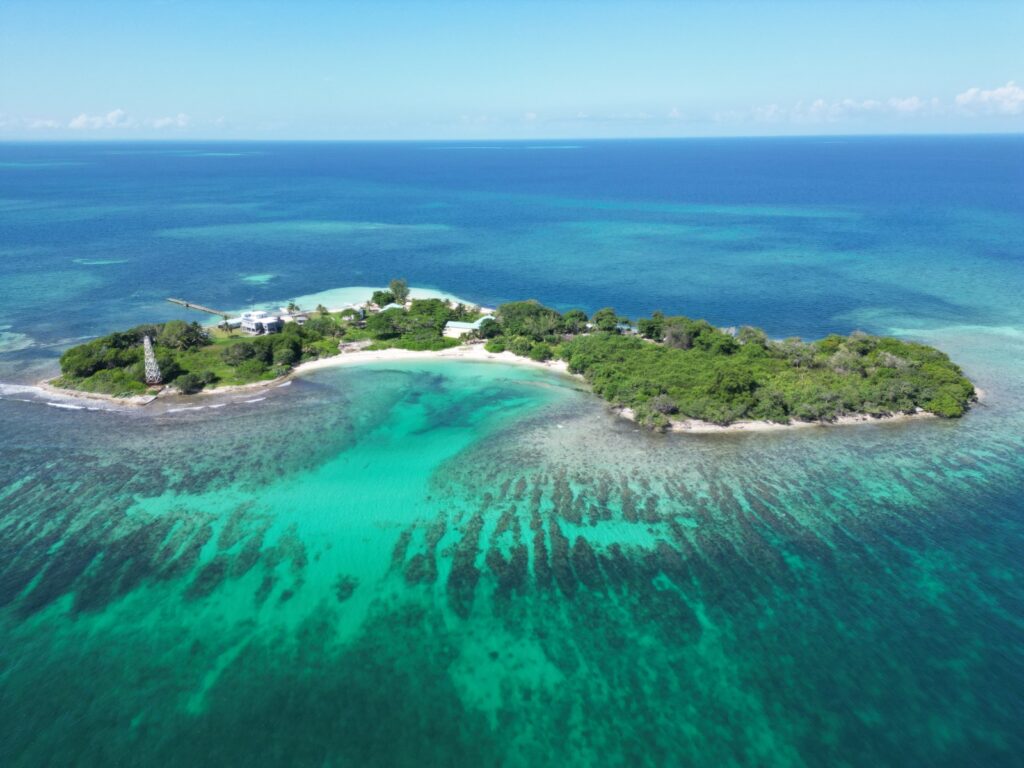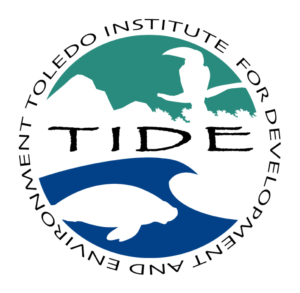Sapodilla Cayes Marine Reserve
Sapodilla Cayes Marine Reserve (SCMR) is the most southern of the marine protected areas in Belize, and encompasses the southernmost tip of the Belize Barrier Reef. The reserve covers an area of 321,623.5 acres (approximately 130,156 ha) and contains fourteen palm-fringed sand or mangrove cayes, fringe reefs, natural lagoons, and key spawning aggregation sites (SPAGs).
The Belize Barrier Reef Reserve System (BBRRS), inscribed as a UNESCO World Heritage Site in 1996, is comprised of seven protected areas; SCMR is the Southernmost of those protected areas.

Ecosystem Importance – The reserve forms part of the Southern Belize Barrier Reef Complex (SBBRC), one of the 17 barrier reef regions that compose the Mesoamerican Reef System. The reef system is home to more than 65 species of stony coral, 350 species of mollusk and more than 500 species of fish (1). There are numerous species that live in or around the reef system that are endangered or under some degree of protection, including the following: sea turtles (green sea turtle, loggerhead sea turtle, leatherback turtle, and the hawksbill turtle), the queen conch, the West Indian manatee, the splendid toadfish, the American crocodile, the Morelet’s crocodile, the Nassau grouper, elkhorn coral, and black coral.
Cultural Importance – The area is a source of pride and income for many coastal communities including some of the earliest fishing communities established in the country such as Monkey River, Punta Negra, Mango Creek and Cattle Landing. Generations of fishermen continue to fish the area, generating income for the country through exports, and also ensuring food security for thousands of Belizeans, particularly in southern Belize.
Economic Importance – Between one and two million people depend directly on the Mesoamerican Reef and its surrounding areas for marine resources and livelihoods (2). The user base is incredibly diverse, with representation of Miskito, Garifuna, Caribbean Creole, Q’eqchi’, Mopan, Yucatec Maya and Mestizo people. The system helps support around US $6.2 billion per year through tourism, commercial fishing and coastal development across Belize, Guatemala, Honduras and Mexico. In Belize, the fisheries sector accounts for 9% of all primary sector output, amounting to more than US $12.4 in income generated primarily by small fishermen across the country. The protection and conservation of Belize’s National Protected Areas System (NPAS) is a critical success factor for sustainable development. This management plan is just one part of a broad, collective effort to ensure that Belize’s natural resources are protected for generations to come. The importance of Belize’s biodiversity cannot be understated – national objectives for conservation revolve around the protection, conservation and rational use of Belize’s natural resources within the context of sustainable human development. These objectives are supported by a variety of national policies that seek to coordinate private and public sector efforts to achieve sustainable development and positive environmental impacts.
Threats – Unfortunately, the reserve continues to face threats from human action and inaction. Large-scale agricultural production in Belize, Guatemala and Honduras leads to agricultural runoff that can alter natural patterns of sedimentation and erosion. Illegal and unsustainable fishing practices continue to threaten the vitality of commercial and recreational species which thousands of Belizeans depend on for income and food security. To make matters worse, climate change continues to reduce the time on hand to effectively cope with and mitigate ecosystem impacts. Carbon emissions and warmer temperatures continue to fuel ocean acidification which smothers coral reef communities and alters wildlife reproductive cycles (3).


(1) Source: World Wildlife Fund (WWF) (2021)
(2) Source: Ibid.
(3) Source: IPCC (2021)
